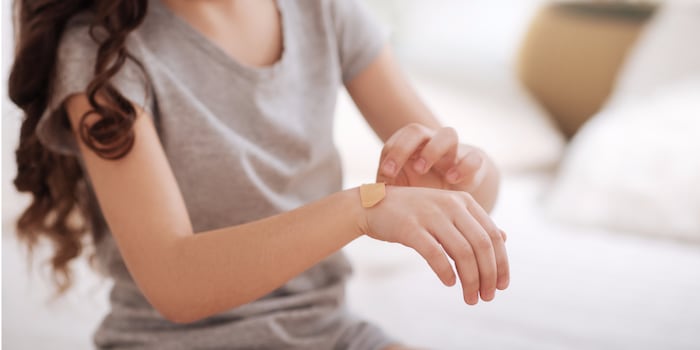
5 tips: Scar aftercare at home
If you have already sustained deep injuries or even undergone surgery, you should actively support the wound healing process. With the help of these five tips, you can minimise scarring.
I myself have two clearly visible scars on my body: a large one on my right arm from a burn I suffered in my first year of life and a small one on my right palm from a (definitely unnecessary) operation that I recently had. Both need attention and care. And as the topic seems to be with me all my life, I would like to share my experiences on the subject of scar aftercare with you today.
Why do scars actually form?
Our skin's job is to protect us from the penetration of microorganisms. In other words: from bacteria, fungi and/or viruses. So if we injure ourselves in such a way that the deeper layers of the skin are also affected, the skin tries to close the resulting wound as quickly as possible. As a result, aesthetics suffer. If we take out our imaginary microscope, we can see: Healthy tissue has interwoven collagen fibres, which ensure that the skin remains elastic. In scar tissue, these fibres are only arranged in parallel, which is why movement is often restricted. Scars are therefore treated with the aim of not only looking more beautiful, but also achieving suppleness.
Have a go yourself
It is important to remember that the scarring process can take up to two years. During this time, they can be described as "fresh". This makes it all the more important to consistently support the scar in the healing process during this time. That's why the first thing my occupational therapist tried to make clear to me after the operation was an optimistic attitude and awareness of the scar: An optimistic attitude and the awareness that you can positively influence the healing process yourself is the most fundamental thing. So if your mindset is right, you can get to work yourself at home (at best in parallel with the necessary therapy) .
Please note that the following information and tips are based on my experience and are in no way a substitute for medical advice or therapy.
This is what you can do yourself to reduce scarring:
1. hygiene
Super simple, but effective: avoid wound infections by regularly disinfecting. Scar inflammation not only causes pain but also blocks or prevents a clean healing process.
2. get out of the sun
Make sure that the affected area is not exposed to direct sunlight. Sunburn is the last thing you need. This damages the scar tissue and impairs its regeneration. It can also slightly darken the colour of the scar, making it even more noticeable.
3. massage, massage, massage
Massaging the scar is also very important. This promotes blood circulation, loosens adhesions and makes the scar itself and the surrounding tissue supple again. You can also treat feelings of tension, hypersensitivity and itching in this way. Five to ten minutes twice a day with light pressure should be enough. Caution: If you massage too much, you can also overstimulate the scar.
4. scar specifics
Silicone-based scar creams or gels complement the above-mentioned daily scar massages perfectly as they moisturise. It is best to consult your doctor or pharmacist to find out which product suits your needs and your scar. It is simply important that the products are only used when there are no more open areas. In my case, this meant at the earliest one day after the stitches had been removed.
5. silicone plasters
Silicone plasters, which can be worn overnight, also ensure that the moisture remains in the scar.
So now I'd like to know: Do you perhaps have a few more valuable tips or comments in store to add to my list? <p
As a massive Disney fan, I see the world through rose-tinted glasses. I worship series from the 90s and consider mermaids a religion. When I’m not dancing in glitter rain, I’m either hanging out at pyjama parties or sitting at my make-up table. P.S. I love you, bacon, garlic and onions.